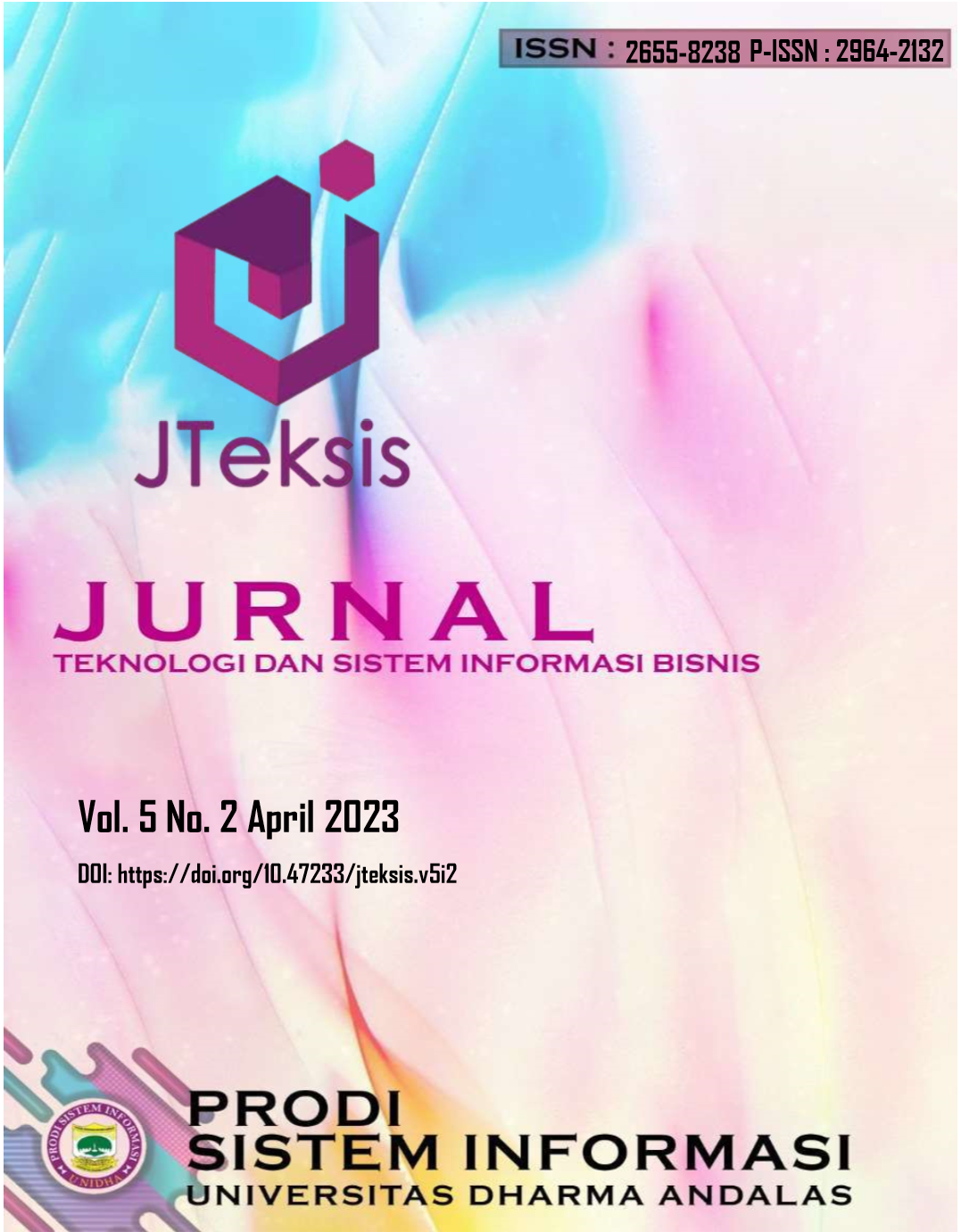Studi Literatur Konsep dan Implementasi Sains Data untuk Memaksimalkan Kinerja Industri Manufaktur
Abstract
The manufacturing industry is currently faced with increasingly complex and diverse challenges. To address this challenge, companies need an approach based on data science to improve production performance and efficiency. This paper proposes the concept and implementation of data science in the manufacturing industry. Several important concepts in data science, including predictive analysis, prescriptive analysis, and optimization, are introduced. It also highlights the algorithms and data analysis techniques used to maximize production performance and reduce costs. Implementing data science in the manufacturing industry involves steps such as data collection, data processing, data analysis, and decision-making. Several use cases of data science in the manufacturing industry, including predictive analytics to forecast machine failures, prescriptive analysis to increase productivity, and optimization to optimize production schedules, are discussed here. The results of this scientific paper show that implementing data science in the manufacturing industry can significantly improve production performance and efficiency. This scientific paper provides useful insights for practitioners, researchers, and policymakers in the manufacturing industry who are interested in applying data science to production processes
Downloads
References
M. K. M. Nasution, “Sains Data,” Researchgate.Net, no. November 2019, 2019.
S. Pramana, “PENINGKATAN LITERASI DATA MENUJU INDONESIA 4.0,” Empower. Community, vol. 1, no. 1, p. 37, Jan. 2020.
F. Provost and T. Fawcett, “Data Science and its Relationship to Big Data and Data-Driven Decision Making,” Big Data, vol. 1, no. 1, pp. 51–59, Mar. 2013.
Q. Qi and F. Tao, “Digital Twin and Big Data Towards Smart Manufacturing and Industry 4.0: 360 Degree Comparison,” IEEE Access, vol. 6, pp. 3585–3593, 2018.
A. L. Alfeo, M. G. C. A. Cimino, G. Manco, E. Ritacco, and G. Vaglini, “Using an autoencoder in the design of an anomaly detector for smart manufacturing,” Pattern Recognit. Lett., vol. 136, pp. 272–278, 2020.
H. Panetto, B. Iung, D. Ivanov, G. Weichhart, and X. Wang, “Challenges for the cyber-physical manufacturing enterprises of the future,” Annu. Rev. Control, vol. 47, pp. 200–213, 2019.
G. Li, C. Yuan, S. Kamarthi, M. Moghaddam, and X. Jin, “Data science skills and domain knowledge requirements in the manufacturing industry: A gap analysis,” J. Manuf. Syst., vol. 60, no. April, pp. 692–706, 2021.
M. O. Gökalp, E. Gökalp, K. Kayabay, A. Koçyiğit, and P. E. Eren, “Data-driven manufacturing: An assessment model for data science maturity,” J. Manuf. Syst., vol. 60, no. July, pp. 527–546, 2021.
R. S. Kenett, A. Zonnenshain, and G. Fortuna, “A road map for applied data sciences supporting sustainability in advanced manufacturing: The information quality dimensions,” Procedia Manuf., vol. 21, pp. 141–148, 2018.
Dr. V. Suma, “Data Mining based Prediction of Demand in Indian Market for Refurbished Electronics,” J. Soft Comput. Paradig., vol. 2, no. 3, pp. 153–159, 2020.
A. Dogan and D. Birant, “Machine learning and data mining in manufacturing,” Expert Syst. Appl., vol. 166, no. February 2019, p. 114060, 2021.
D. Beverungen, O. Müller, M. Matzner, J. Mendling, and J. vom Brocke, “Conceptualizing smart service systems,” Electron. Mark., vol. 29, no. 1, pp. 7–18, 2019.
N. N. Hasanah and A. S. Purnomo, “Implementasi Data Mining Untuk Pengelompokan Buku Menggunakan Algoritma K-Means Clustering (Studi Kasus : Perpustakaan Politeknik LPP Yogyakarta),” J. Teknol. Dan Sist. Inf. Bisnis, vol. 4, no. 2, pp. 300–311, Jul. 2022.
Afdhal, M., Ariandi, V., & Rita, R. (2022). Memprediksi Penjualan Pada Toko Hanifah Metode C. 45. Jurnal Teknologi Dan Sistem Informasi Bisnis, 4(2), 248-255.
Sahrun, N., & Sularno, S. (2023). Rancang Bangun Sistem Informasi Geografis Menemukan Lokasi Dokter Hewan Berbasis Android. Jurnal Teknologi Dan Sistem Informasi Bisnis, 5(1), 21-32.

This work is licensed under a Creative Commons Attribution 4.0 International License.
Authors retain copyright and grant the journal right of first publication with the work simultaneously licensed under an Attribution 4.0 International (CC BY 4.0) that allows others to share — copy and redistribute the material in any medium or format and adapt — remix, transform, and build upon the material for any purpose, even commercially with an acknowledgment of the work's authorship and initial publication in this journal.







































